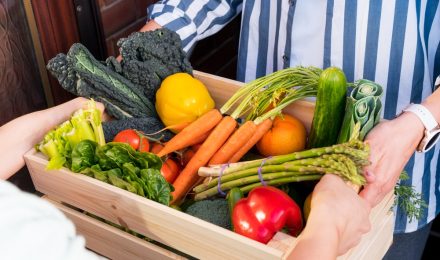Table of Contents
Understanding and Accessing Food Assistance Programs involves navigating a range of federal and community resources designed to ensure that individuals and families facing economic hardship can secure adequate nutrition. These programs deliver benefits through direct food distribution, electronic benefits transfer systems, and partnerships with local agencies. This article provides an authoritative guide to the principal food assistance programs, eligibility requirements, application procedures, and strategies for leveraging community resources to maximize support.
Federal Nutrition Assistance Programs Overview
The United States Department of Agriculture (USDA) administers the major federal food assistance initiatives, each tailored to different population groups and needs:
Supplemental Nutrition Assistance Program (SNAP)
SNAP is the largest domestic nutrition assistance program, providing electronic benefits to eligible low-income households. Benefits are loaded monthly onto Electronic Benefits Transfer (EBT) cards, which function like debit cards for approved food purchases at authorized retailers and farmers markets.
ers.usda.gov
Special Supplemental Nutrition Program for Women, Infants and Children (WIC)
WIC serves pregnant, postpartum, and breastfeeding women, as well as infants and children up to age five who are at nutritional risk. Participants receive supplemental food packages, health screenings, referrals, and education on breastfeeding and nutrition.
usda.gov
The Emergency Food Assistance Program (TEFAP)
TEFAP provides emergency food assistance at no cost by distributing USDA-purchased commodities through local food banks and pantries. States receive both food and administrative funds to ensure equitable distribution to low-income individuals during crises.
fns.usda.gov
Commodity Supplemental Food Program (CSFP) and Food Distribution Program on Indian Reservations (FDPIR)
CSFP targets seniors aged 60 and older, offering monthly food packages. FDPIR ensures nutrition assistance for Native American families residing on or near reservations through USDA commodity distribution.
Eligibility and Application Process
Eligibility criteria vary by program but generally consider household income, family size, and specific nutritional needs:
- SNAP: Household gross monthly income must not exceed 130 percent of the federal poverty level, with net income limits and asset tests applied in most states.
- WIC: Income must be at or below 185 percent of the federal poverty level, and participants must demonstrate nutritional risk through screening.
- TEFAP, CSFP, FDPIR: Income guidelines align with 130 percent of poverty for individual and household eligibility; TEFAP also prioritizes disaster-affected populations.
To apply, individuals visit their state or territory’s human services or public assistance website. Online portals typically allow pre-screening to estimate benefit amounts and provide downloadable application forms. In-person or phone applications are available through designated local agencies.
Accessing Benefits: EBT and Distribution Channels
Electronic Benefits Transfer (EBT) technology underpins SNAP and can also be used for WIC in some states. EBT cards enable discreet, dignified transactions comparable to private purchasing. For commodity distribution programs:
- Food Banks and Pantries: Partner agencies receive USDA commodities to distribute through regular pantry operations or emergency food drives.
- Mobile Distribution Units: In rural or underserved areas, mobile units bring TEFAP and CSFP packages directly to communities lacking brick-and-mortar facilities.
Understanding benefit schedules and distribution locations is essential; most local agencies publish calendars online, and USDA’s FNS locator tools identify nearby service providers.
Community and Local Resources
Beyond federal programs, community-based organizations and non-profits augment food assistance:
- Local faith-based charities and regional food banks often operate community kitchens and school-based backpack programs for children.
- Nutrition education workshops and cooking demonstrations help participants make cost-effective, healthy meal choices.
- Seasonal initiatives like summer meal services ensure children receive free meals when school is not in session.
Engaging with community advisory councils or program volunteer boards can improve awareness of new or expanded services, including pandemic-related benefits like Pandemic EBT (P-EBT).
Maximizing Program Impact and Resources
To fully benefit from available support, applicants should:
- Combine Programs Where Eligible: Households may concurrently qualify for SNAP, WIC, and CSFP, compounding nutritional support.
- Stay Informed of Policy Changes: Annual updates to income guidelines and commodity offerings can affect eligibility and benefit levels.
- Utilize Educational Offerings: Many agencies provide budgeting classes, cooking demonstrations, and referrals to complementary services such as housing assistance or healthcare screenings.
Regular communication with caseworkers and program coordinators ensures timely renewals and prompt responses to changes in income or family composition.
Conclusion
Effective navigation of food assistance programs requires an understanding of federal initiatives, eligibility requirements, and local distribution networks. By leveraging SNAP, WIC, TEFAP, and allied community resources, eligible individuals and families can secure consistent access to nutritious food. For more information or to begin the application process, consult your state’s Department of Human Services website or USDA’s Food and Nutrition Service portal.
References
- USDA Food and Nutrition Service. The Emergency Food Assistance Program (TEFAP). fns.usda.gov
- USDA Food and Nutrition Service. Special Supplemental Nutrition Program for Women, Infants and Children (WIC). usda.gov
- USDA Economic Research Service. Supplemental Nutrition Assistance Program (SNAP) Overview. ers.usda.gov
Table of Contents
Understanding and Accessing Food Assistance Programs involves navigating a range of federal and community resources designed to ensure that individuals and families facing economic hardship can secure adequate nutrition. These programs deliver benefits through direct food distribution, electronic benefits transfer systems, and partnerships with local agencies. This article provides an authoritative guide to the principal food assistance programs, eligibility requirements, application procedures, and strategies for leveraging community resources to maximize support.
Federal Nutrition Assistance Programs Overview
The United States Department of Agriculture (USDA) administers the major federal food assistance initiatives, each tailored to different population groups and needs:
Supplemental Nutrition Assistance Program (SNAP)
SNAP is the largest domestic nutrition assistance program, providing electronic benefits to eligible low-income households. Benefits are loaded monthly onto Electronic Benefits Transfer (EBT) cards, which function like debit cards for approved food purchases at authorized retailers and farmers markets.
ers.usda.gov
Special Supplemental Nutrition Program for Women, Infants and Children (WIC)
WIC serves pregnant, postpartum, and breastfeeding women, as well as infants and children up to age five who are at nutritional risk. Participants receive supplemental food packages, health screenings, referrals, and education on breastfeeding and nutrition.
usda.gov
The Emergency Food Assistance Program (TEFAP)
TEFAP provides emergency food assistance at no cost by distributing USDA-purchased commodities through local food banks and pantries. States receive both food and administrative funds to ensure equitable distribution to low-income individuals during crises.
fns.usda.gov
Commodity Supplemental Food Program (CSFP) and Food Distribution Program on Indian Reservations (FDPIR)
CSFP targets seniors aged 60 and older, offering monthly food packages. FDPIR ensures nutrition assistance for Native American families residing on or near reservations through USDA commodity distribution.
Eligibility and Application Process
Eligibility criteria vary by program but generally consider household income, family size, and specific nutritional needs:
- SNAP: Household gross monthly income must not exceed 130 percent of the federal poverty level, with net income limits and asset tests applied in most states.
- WIC: Income must be at or below 185 percent of the federal poverty level, and participants must demonstrate nutritional risk through screening.
- TEFAP, CSFP, FDPIR: Income guidelines align with 130 percent of poverty for individual and household eligibility; TEFAP also prioritizes disaster-affected populations.
To apply, individuals visit their state or territory’s human services or public assistance website. Online portals typically allow pre-screening to estimate benefit amounts and provide downloadable application forms. In-person or phone applications are available through designated local agencies.
Accessing Benefits: EBT and Distribution Channels
Electronic Benefits Transfer (EBT) technology underpins SNAP and can also be used for WIC in some states. EBT cards enable discreet, dignified transactions comparable to private purchasing. For commodity distribution programs:
- Food Banks and Pantries: Partner agencies receive USDA commodities to distribute through regular pantry operations or emergency food drives.
- Mobile Distribution Units: In rural or underserved areas, mobile units bring TEFAP and CSFP packages directly to communities lacking brick-and-mortar facilities.
Understanding benefit schedules and distribution locations is essential; most local agencies publish calendars online, and USDA’s FNS locator tools identify nearby service providers.
Community and Local Resources
Beyond federal programs, community-based organizations and non-profits augment food assistance:
- Local faith-based charities and regional food banks often operate community kitchens and school-based backpack programs for children.
- Nutrition education workshops and cooking demonstrations help participants make cost-effective, healthy meal choices.
- Seasonal initiatives like summer meal services ensure children receive free meals when school is not in session.
Engaging with community advisory councils or program volunteer boards can improve awareness of new or expanded services, including pandemic-related benefits like Pandemic EBT (P-EBT).
Maximizing Program Impact and Resources
To fully benefit from available support, applicants should:
- Combine Programs Where Eligible: Households may concurrently qualify for SNAP, WIC, and CSFP, compounding nutritional support.
- Stay Informed of Policy Changes: Annual updates to income guidelines and commodity offerings can affect eligibility and benefit levels.
- Utilize Educational Offerings: Many agencies provide budgeting classes, cooking demonstrations, and referrals to complementary services such as housing assistance or healthcare screenings.
Regular communication with caseworkers and program coordinators ensures timely renewals and prompt responses to changes in income or family composition.
Conclusion
Effective navigation of food assistance programs requires an understanding of federal initiatives, eligibility requirements, and local distribution networks. By leveraging SNAP, WIC, TEFAP, and allied community resources, eligible individuals and families can secure consistent access to nutritious food. For more information or to begin the application process, consult your state’s Department of Human Services website or USDA’s Food and Nutrition Service portal.
References
- USDA Food and Nutrition Service. The Emergency Food Assistance Program (TEFAP). fns.usda.gov
- USDA Food and Nutrition Service. Special Supplemental Nutrition Program for Women, Infants and Children (WIC). usda.gov
- USDA Economic Research Service. Supplemental Nutrition Assistance Program (SNAP) Overview. ers.usda.gov







